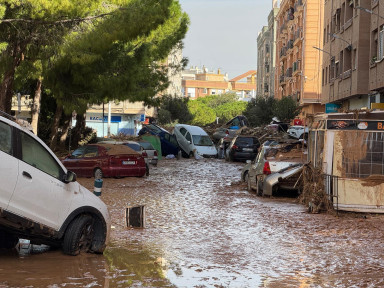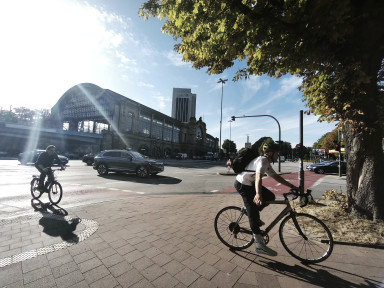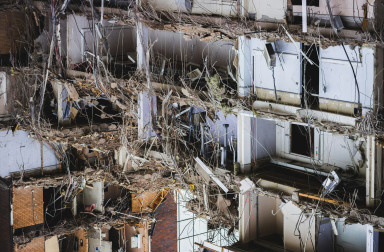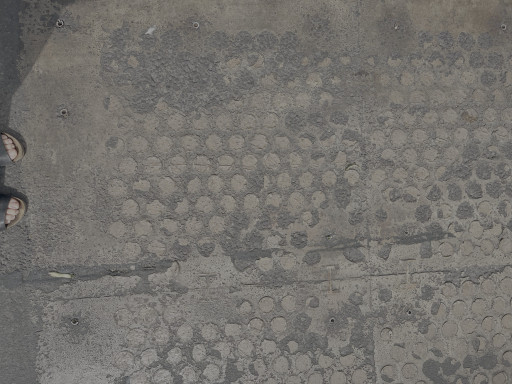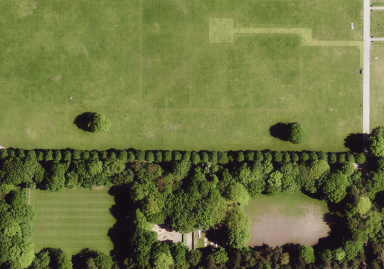Disrupted mobilities
Dis/Continuities in the (re)production of mobility practices in times of disaster
Climate-related disasters are increasingly shaping the rhythms of everyday life.1 They not only destroy material infrastructures but also destabilize the practices that depend on them. This research investigates how disruptions caused by disasters influence the (re)production of urban mobility practices and what role professional agency plays in these processes. Drawing from practice theory, disaster sociology, and mobility research, the project explores how urban professionals mediate between reconstructing damaged infrastructures and building future-oriented mobility imaginaries. There are three reasons why climate-related disasters are investigated as an impetus for change. First, disasters alter the materiality of everyday life by damaging or destroying infrastructures necessary for daily practices; rebuilding contains the potential to alter both the infrastructures and material conditions. Second, disasters force changes in practices, which may in turn affect the construction of new infrastructures. Third, disasters render the impact of climate change visible and perceptible, bringing it into the present and thereby create an urge to reimagine futures.
- disruption
- mobility practices
- disaster response
- infrastructures
- agency
Context
As often illustrated in media images, destroyed or immobilized cars have become visual symbols of disruption, especially in climate-related disasters.2 These images point not only to physical and financial damage but also to the breakdown of routine mobility systems that underpin everyday life. As routines are interrupted, an opportunity arises to intervene in the cycle of reproduction between infrastructures and practices.3 I argue that change may occur through the emergence of new practices materializing in new infrastructures, or through active decisions in rebuilding infrastructures, thereby shaping future practices. In both cases, decision-making processes are involved, where different imaginaries of possible futures compete. Yet these processes are rarely smooth. Not only do crises and uncertainty challenge deliberate decisions aimed at long-term transition, they also generate immediate necessities for action. Decision-making shifts from planned, purposeful strategies to urgent responses. The tension lies in the simultaneity of urgency and opportunity: While disasters force action in the present, they also open space for transformations that may reconfigure infrastructures, practices, and imaginaries of the future.
Aims
This project aims to explore the tension in the relationship between infrastructures and practices in disasters, focusing on how professionals respond when infrastructures are destroyed. Disruptions present an open situation that cannot be deliberately produced through political effort. Infrastructures are considered quite resilient, and changing them is related to large interventions in built environments and the social practices that rely on them.4 If infrastructures are destroyed, this resilience is questioned and opens an opportunity for professionals to intervene in the built environment.5 In fact, these professionals even need to intervene, because not acting would maintain the state of disruption. This thesis therefore seeks to investigate how professionals act in response to disasters and which roles improvised local responses and imaginaries of future urban mobility play in reconstructing urban mobility. These findings intend to contribute fundamental insights into the question of how changes in mobility can be achieved in a disaster-stricken world.
Research design
The 2024 flood in Valencia, Spain, serves as an empirical case for examining how urban mobility practices are reshaped when infrastructures collapse. Roads were destroyed, vehicles immobilized, and public transport halted, thereby suspending everyday mobility routines such as commuting, shopping, and visiting friends and family. Such disruptions force immediate adaptations while also raising long-term questions about how future infrastructures should be rebuilt. The research adopts an ethnographic approach that will bring together field observations and interviews with urban professionals, including emergency management personnel, city planners, architects, transportation managers, NGO staff, and neighbourhood initiative members. By engaging a diverse array of professionals, this research aims to gain a rich and varied perspective on the way disruptions influence mobility practices within urban environments, how professional agency is exercised, and how power shapes action. The notion of professional agency is understood very broadly: Urban planners in charge of reconstruction are considered to be such professionals, as are the local neighbourhood initiative members who acted as first responders in the disaster.
Supervisors:
